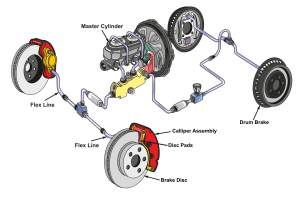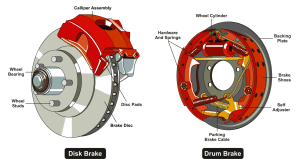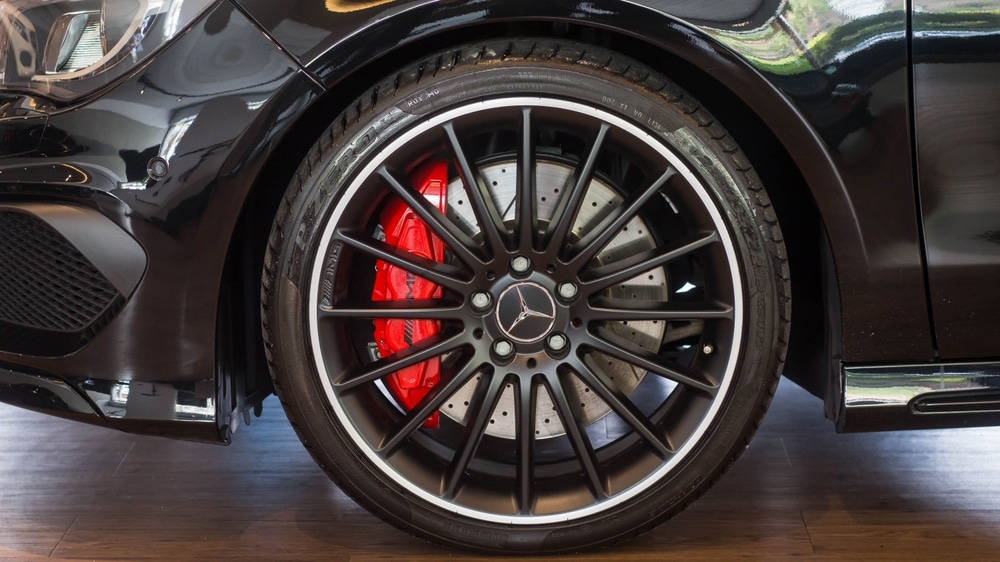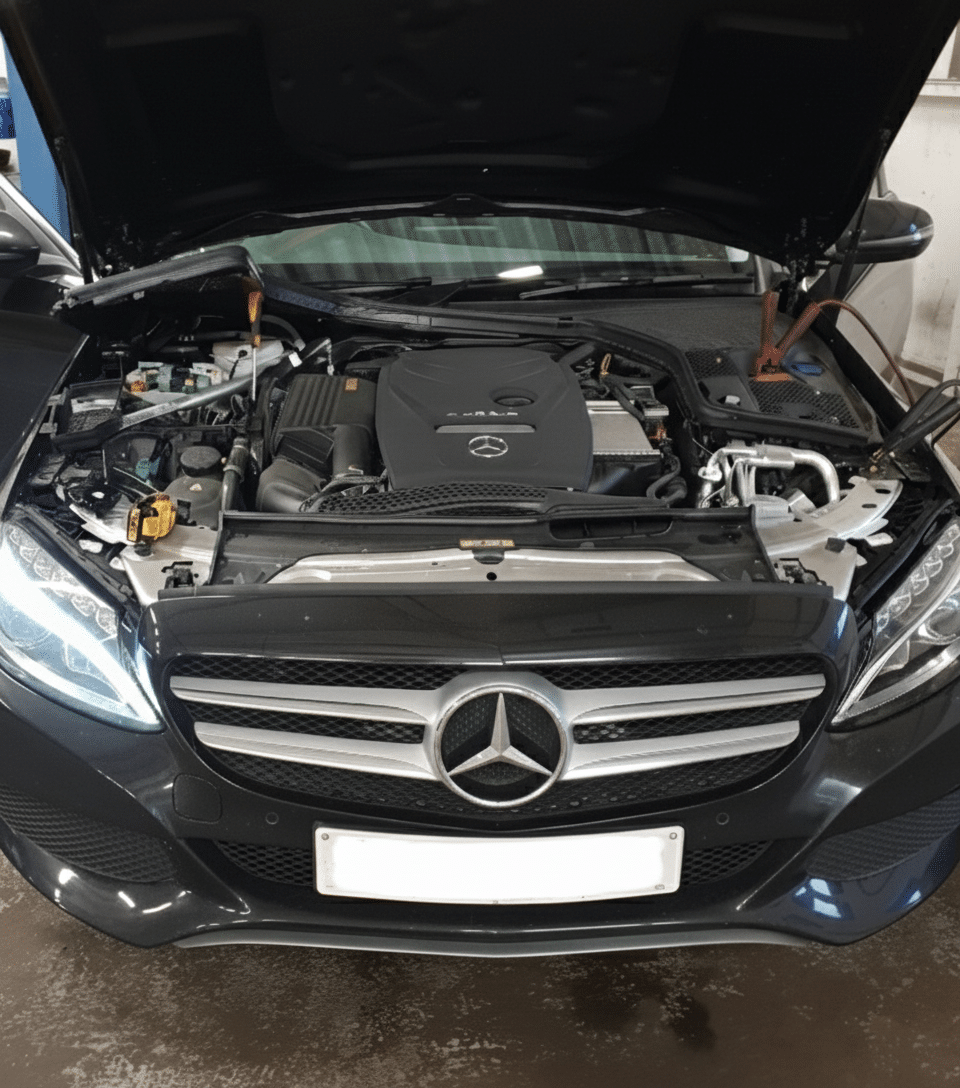Braking System
You might not think much about how your car’s braking system works—you press the pedal, the car slows down. Simple. But in reality, there’s a whole series of components working together to bring you to a safe and controlled stop.
By understanding how the braking system operates, you’ll become a more informed driver and gain a deeper appreciation for the crucial role your brakes play in your overall safety.
In this guide from JDK Automotive in Camberley, we’ll explore:
- How car brakes work
- What happens when you press the brake pedal
- The key components of your braking system, including ABS and the parking brake
- Why proactive maintenance matters
Read on to get to know more about how this critical system operates…
How the Braking System Slows You Down
Your braking system has one clear purpose: to stop a moving vehicle safely and reliably. The force it manages each time you brake is considerable. Your vehicle, heavy and moving at speed, perhaps 70mph, can be brought to a smooth, controlled stop with just a press of the pedal. But what makes that possible?
The Simple Science Behind Stopping
When your car is in motion, it stores kinetic energy. The faster you go, the more energy is built up. The braking system’s job is to convert that kinetic energy into heat through friction, slowing the car down.
When you press the brake pedal:
- Hydraulic pressure is generated and transmitted through sealed brake lines to each wheel
- At each wheel, friction is created to slow the rotation
- In hard braking, the Anti-lock Braking System (ABS) intervenes to stop the wheels from locking, helping you stay in control
From there, friction is produced to slow you down, using either:
- Disc brakes, which work by pressing brake pads against a rotating disc. Or…
- Drum brakes, which push brake shoes outward to meet the inside of a rotating drum
But have you ever wondered what actually happens when you press your brake pedal? Let’s take a closer look…

What Your Brake Pedal Really Sets in Motion
Every time you touch the brake pedal, a finely-tuned sequence is triggered in a split second. Let’s break down exactly what happens inside your braking system, from the instant your foot touches the pedal to the moment your car comes to a full stop.
- Pedal pressure starts it all. As your foot presses down, it engages the brake servo (or booster), which multiplies your input force. Otherwise, you’d need much more strength to stop the car.
- This amplified force reaches the master cylinder, which converts mechanical pressure into hydraulic pressure. The fluid in the system is now pressurised.
- Brake fluid is transmitted through sealed brake lines and hoses, delivering that hydraulic force to each wheel.
- At each wheel, the pressure activates the brake mechanism:
- In disc brake systems (the most common today), hydraulic pressure forces the brake pads to clamp onto a rotating brake disc. This contact creates friction, converting the car’s kinetic energy into heat. The heat then slows the wheels and brings the vehicle to a controlled stop.
- In drum brake systems (which are most typically found on rear wheels or older vehicles), hydraulic pressure activates wheel cylinders, pushing the brake shoes outward against the inside surface of a rotating drum. The friction between the shoes and drum converts kinetic energy into heat, slowing the vehicle down.

- When you lift your foot, the pressure drops, the system resets, and the brakes release. Your car is free to move again.
This entire chain of events happens almost instantly, allowing you to control your car’s speed with the touch of a pedal.
At JDK Automotive in Camberley, we understand how crucial it is for every part of this system to be working at its best. Regular servicing helps us identify wear before it becomes a safety issue. Our technicians know the early warning signs of worn brakes and will fix small issues before they become bigger problems.
Other Key Features of the Braking System
Anti-lock Braking System (ABS)
ABS steps in during sudden or heavy braking. It uses sensors at each wheel to detect when one is about to lock. The system responds by pulsing the brake pressure multiple times per second. This prevents lock-up and helps you maintain steering control while still slowing the vehicle effectively.
The Parking Brake
Your parking brake, sometimes called a handbrake, is an independent part of your braking system. It’s designed to keep the car stationary when parked and can act as a backup if your main brakes ever fail.
- Traditional systems use a lever to engage cables connected to the rear brakes
- Many newer cars use an electronic switch to do the same job via a motor
Regardless of the setup, the parking brake functions separately from the main braking system and is legally required to act on at least two wheels, making it a vital safety feature as well as a parking tool.
Don’t Leave Your Braking System to Chance
It’s easy to ignore a slight squeal or a soft pedal until the problem becomes serious. At JDK Automotive, we take braking safety seriously. That’s why every scheduled service includes a detailed brake check, ensuring your system performs when it matters most.
If anything feels off in between services, don’t wait. The earlier you catch a braking issue, the easier it is to fix.
Here’s why drivers in Camberley and Farnborough trust JDK Automotive with their brakes:
- Technical expertise using professional-grade diagnostic tools
- Clear, honest advice from trained technicians—no jargon, no upselling
- Genuine or OEM-matching parts fitted with care
- Transparent pricing and great value
- 12-month parts and labour guarantee
We are proud to have a {{average-rating}} star Google rating from {{review-count}} satisfied customers across Camberley and Farnborough.
Need your brakes checked or want peace of mind before a long drive? Call JDK Automotive on 01276 535585. We’ll keep your braking system in top condition, keeping you confidently on the road.



